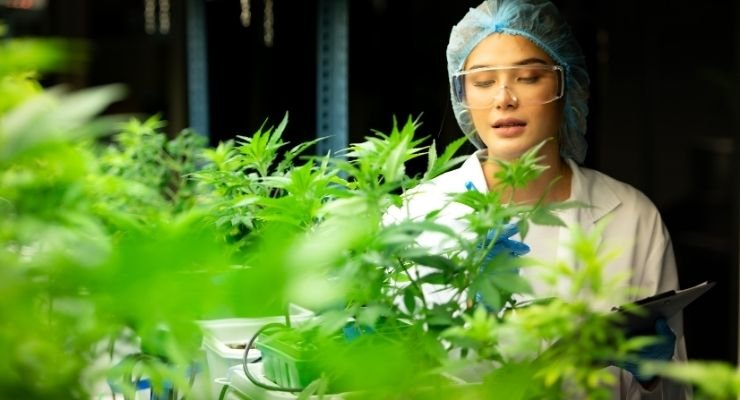
Growing cannabis is growing in popularity, especially since more and more people are becoming aware of its benefits. Cannabis sativa is a unique species of plant defined by its unique chemical components, known as cannabinoids. Both the mind and the body of an individual can be influenced by these substances. One of the reasons growing marijuana is banned in many nations is that some people misuse it. However, a number of countries have changed their laws as more scientific studies show its beneficial effects on health, including the use of cannabis oil, cannabis tincture, and cannabis edibles for relief.
The cultivation of cannabis became legal in Canada in October 2018. It is now legal for people to grow, consume, and even start a cannabis flower business, especially for medical purposes. As a result, lots of individuals are starting to understand how to begin cultivating cannabis at home or in controlled settings. However, you have to understand how the cannabis plant life cycle works in order to achieve this successfully. A cannabis indica or cannabis sativa plant requires different care at each stage of its life. You may grow high-quality, healthy cannabis if you know what your plant needs at each stage. Gaining knowledge about these weed plant stages can also help you stay clear of issues and achieve better outcomes at each stage of development.
In this blog, you will gain a complete understanding of the entire process of the cannabis growth cycle. From the vegetative stage, when cannabis seeds first germinate, to enhancing growth throughout the flowering stage, the proper method of harvesting, and the final stage of how to take care of the cannabis after the harvest. You will also get to discover some valuable pro tips for properly taking care of cannabis strains’ growth at every stage, and lastly, avoid the common mistakes that lots of people make during the growing process of cannabis. All the information that you will get from here will help you to have a great growth of cannabis. Whether you are just starting or want to improve your results, understanding the cannabis growth cycle is the key to healthy, strong plants. You may also explore products like cannabis gummies and cannabis tea that come from well-grown plants.
Stage 1: The Cannabis Seed Germination Process

The very first stage of the weed plant stages is cannabis germination. This is the phase at which a cannabis seed starts to grow and mature into a plant. The first phase is extremely important because it starts the cannabis plant’s life cycle. The seed becomes softer, absorbs moisture, and opens during germination to allow the root to reach deep into the soil. You can get started by putting the seed for 12 to 24 hours in the water. After soaking in a dark place, place it in a place like between the soaked paper towels or inside a peat pellet or Jiffy pellet. It should be left untouched. As the seed starts to grow, a tiny white root known as the taproot will become visible. Many people learn how to properly germinate seeds before they start growing marijuana or other cannabis.
A large number of seeds germinate in 24 to 72 hours; however, some might require a few more days. Maintain a warm temperature (between 21°C and 25°C), a lightly humid atmosphere, and moist but not spongy seeds for getting the best results. The best conditions for your seed to develop into a strong cannabis sativa or cannabis indica plant are a good mix of water, warmth, and darkness. The plant moves into the seedling stage after the root system becomes visible and the first leaves start to show. At this point, you can start exploring other cannabis strains and preparing for future stages like growing your own cannabis flower, making cannabis tea, or even learning how to use cannabis tincture, cannabis edibles, cannabis oil, or cannabis gummies later in the cycle.
Stage 2: Early Growth In The Seedling Phase
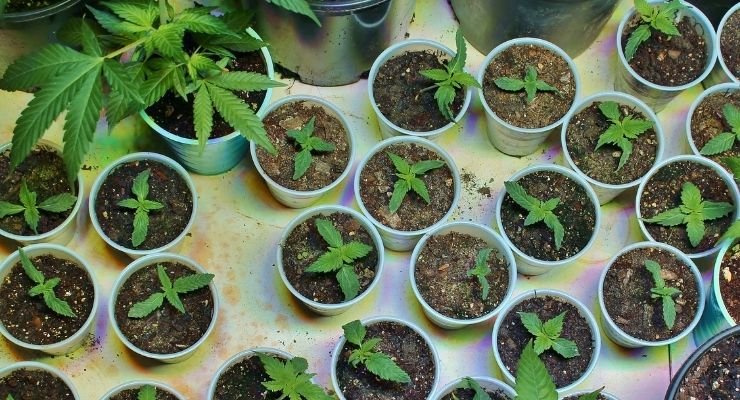
After the cannabis seed grows and the tiny, round leaves known as cotyledons start to appear in the seedling phase. These very young leaves support the plant as it starts photosynthesis. The first group of pointed leaves appears on the plant as it grows, showing that the seedling stage is moving forward. As the plant grows stronger, new leaves will begin to grow more fingers, even though these leaves may at first only have one. The majority of mature cannabis leaves have five or seven leaves, but some can have up to thirteen. The seedling remains small and weak during this stage, so handling it gently is very important.
On average, the seedling phase lasts two to three weeks. The plant requires clean conditions, soft light, and light moisture at this time. Strong nutrients should be avoided since they can harm young roots. It typically contains sufficient nutrients for the very first week or two if you are growing in soil. Very weak nutrients may be required for coco or hydroponic systems. To prevent high temperatures, use soft lighting, such as LED or fluorescent lights. A powerful, short seedling with vibrant green leaves is considered healthy.
Stage 3: Cannabis Vegetative Stage Explained

Your cannabis plant begins to grow stronger and larger during the cannabis vegetative stage. Building size and strength is the main objective of this phase, which starts as soon as the seedling phase ends. The plant is focused on creating roots, stems, and leaves. The plant grows tall and wide during this period instead of producing cannabis flowers. As a result, a strong foundation helps in the support of flowers afterwards; this stage plays an important role in future bud development. In accordance with the cannabis strain, as well as if you grow them from autoflower or daylight hours seeds, plants should remain in this stage for three to sixteen weeks. This stage is one of the most important weed plant stages in the growing cycle.
In order to help in the ability of plants absorb light, the cannabis vegetative stage focuses on the plant growth of more leaves, thicker stems, and deeper roots. In order to increase this growth, improve the daily amount of light your plant receives. A large number of people who are growing weed indoors manage their lights for 18 to 24 hours at a time. Make use of well-draining soil and fertilizer that is high in nitrogen. To keep the plant healthy, keep the space warm and slightly wet. Avoid overwatering. However, let the soil dry out a little bit between waterings. Your cannabis plant develops its strength and form during this phase before going into flower. These practices apply to both indoor and outdoor growing methods and are commonly followed by those growing marijuana for personal or medical use.
Stage 4: Maximizing Growth In The Flowering Phase
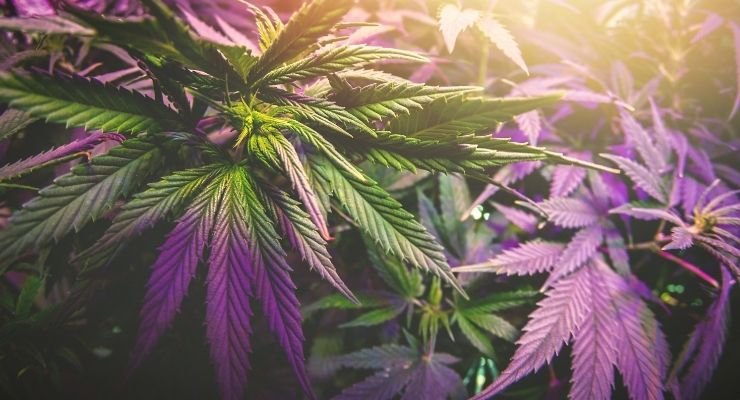
When the vegetation stops getting tall and concentrates on making buds, then it is the start of the cannabis flowering stage. This can be caused indoors by providing the plant with 12 hours of light and 12 hours of total darkness each day, or it can occur naturally outdoors as daylight hours decrease. Based on the pressure, this stage typically lasts seven to ten weeks. Plants develop buds during this period, which will eventually be harvested. The pistils, which are new white hairs that eventually change colour, may be visible. In addition, as the plant produces greater amounts of resin on the buds, it will become stickier. This is one of the most important weed plant stages when growing marijuana.
The growers should provide the plants with the proper nutrients, especially phosphorus, for proper cannabis flower development in order to achieve the best results. Mould must be prevented by maintaining a clean environment with humidity levels between 40 and 50 percent. During the day, the temperature should remain between 70 and 85 °F, with a slight decrease at night. Consistent watering and proper air circulation also encourage healthy growth. Strong lights may harm or burn plants, so keep them away from the plant if you are using them. Better buds result from better care, especially during the flowering cycle of growing weed.
Stage 5: The Art Of Harvesting Cannabis
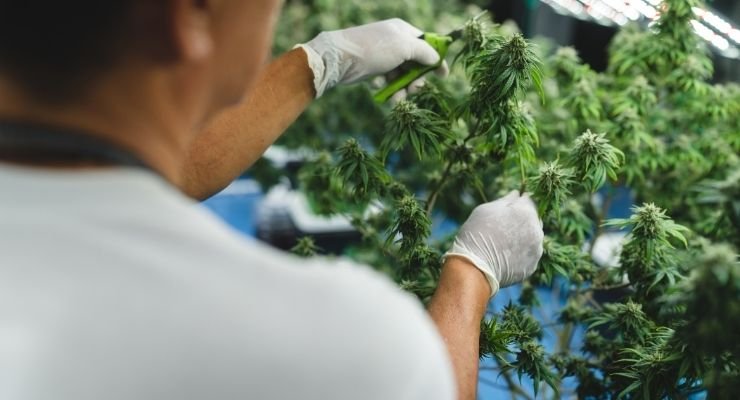
The second-to-last step in the weed plant stages is cannabis harvesting. It is when you gather the cannabis flower once they have reached full maturity. Looking at the pistils, the hair-like parts of the buds, is one of the simplest methods for deciding when to harvest cannabis. The plant is typically ready when the majority of the pistils change from white to orange or reddish-brown. The trichomes, which are small in size, crystal-like structures on the buds, are another useful indicator. You can use a tiny magnifying glass to perform a trichome check to see if they have changed from being clear to being amber or milky white.
In addition, when the buds are gently pressed, they should feel thick and solid. This is another sign that your growing marijuana or weed plant has reached maturity. Select a day to harvest that is dry and rain-free for the best results. Since the plant’s oils are strongest in the morning, this time of day is perfect. You can get higher production, stronger effects, and better taste by waiting for the right time. Cannabis harvesting at the right time can have a major effect on its overall quality.
Stage 6: Post-Harvest Steps For Quality Cannabis
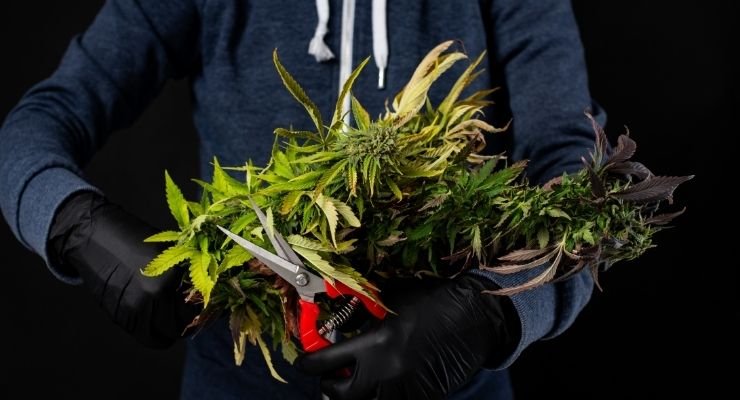
The final stage in the weed plant stages is what happens after the harvest. This step is important for keeping fresh, strong, and pleasurable buds. This phase’s main functions are the post-harvest cannabis processes: cannabis drying, curing cannabis, and storing cannabis. The first step is the drying process. It helps the cannabis flower buds lose excess moisture and typically takes five to ten days. The buds are placed upside down in a well-ventilated, dark room to achieve this. When the buds have finished drying, they are prepared for cannabis curing.
The next step is cannabis curing, which typically takes two to four weeks. It involves placing the extracted buds in airtight containers or glass jars. To release stored moisture and allow fresh air to enter, these jars are opened once or twice daily. This contributes to the buds’ increased flavour and smoothness. Proper storage of the buds is the final step after cannabis curing. To preserve their quality and scent, they should be stored in a cool, dark location. These methods can improve your growing weed, growing marijuana, effectiveness, flavour, and smoothness if followed properly.
Pro Tips For Every Stage Of Cannabis Growth
It is vital to take proper care of your cannabis plant if you want strong and healthy growth. Below, you will find helpful tips that can guide you through each stage of the growing process.
Tips For Every Stage Of Cannabis Growth:
- Germination Tip: Always begin with cleaned equipment. To prevent the introduction of mould or bacteria during the early stages of germination, use filtered water and washed trays or containers.
- Seedling Tip: Lights should be kept close but not too hot. LED lights should be placed 12 inches above the seedlings. If necessary, adjust the light distance based on the colour of the leaves.
- Vegetative Tip: Get your plant prepared early. Apply low-stress training (LST) techniques, such as gently bending branches, to boost growth by letting more light reach inner leaves.
- Post-Harvest Tip: Dry in a well-ventilated, dark area. To maintain their flavour and effectiveness, place the flower buds upside down in a cool, dark place with a constant airflow for seven to ten days.
- Flowering Tip: Lower the humidity levels. During this phase, maintain a humidity of 40–50 percent to prevent mould growth and support the development of stronger, more fragrant buds.
- Harvest Tip: Make use of a magnifying lens. Check the buds’ trichomes; if they are the colour amber or blurred, the plant is ready for harvest.
Bonus Tips:
- Keep It Clean: To prevent disease or pests, always wash your hands and your tools before working with your plants.
- Use A Timer: To maintain a consistent and stress-free routine for your plant, set a timer for when to water and light it.
- Take Notes: To keep track of each plant’s growth, changes, and what suits you best, keep a little diary or app. You get better every time because of this.
Avoid These Common Cannabis Growing Mistakes
Even though growing cannabis can be a fulfilling experience, common errors in cannabis cultivation made at various points can have an effect on your outcomes. You can produce healthier plants with greater harvests if you pay attention to each stage.
- Ignoring The Research Stage: A lot of beginner growers begin without learning the fundamentals. Spend some time learning about the growing process and what your plants require at each stage.
- Overwatering During Germination: Water is essential for seeds to grow, but too much of it can drown them. Throughout the very first phase, keep the soil just moist, not soggy.
- Ignoring Humidity During Flowering: The mould and decay of buds can result from high humidity during the flowering stage. To maintain dry, flowing air, use fans or dehumidifiers.
- Harvesting Too Early or Too Late: While waiting too long lowers quality, cutting plants too soon produces poor results. To decide on the ideal time, use a magnifying glass to examine the trichomes.
- Combining Too Many Types at Once: It can be confusing to grow a lot of different varieties at once. Just one or two types that succeed under the same circumstances should be started.
Conclusion
Growing cannabis is a step-by-step process that needs patience, care, and knowledge at every stage. From avoiding early mistakes like overwatering seeds and skipping research to managing humidity during flowering, choosing the right number of strains, and harvesting at the right time, each step plays a big role in your plant’s success. Paying attention to soil, water, light, and environment will help you get better results. Now that you understand these common mistakes and how to avoid them, you can grow with more confidence and fewer problems. Take what you have learned and use it to start your cannabis growing journey or optimize your growth cycle for healthy plants and a better yield. Your best growth starts now.

